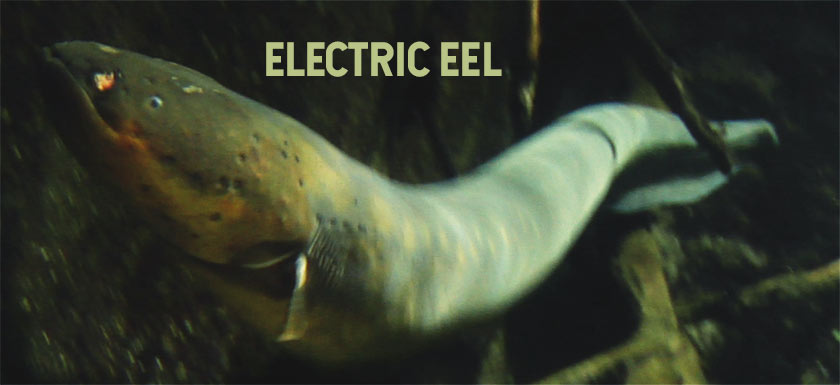How to Survive the Electric Eel

If you waste deep in murky water and up swims an electric eel, you’re in deep trouble. You need to know what to do, and act fast because electric eels pack a powerful punch!

In March of 1800 the famous European naturalist Alexander von Humbolt decided he wanted some electric eels to bring home to Europe. But he faced a dilemma – how to get them without electrocuting himself?
He executed a plan based on suggestions from the locals that the horses could de-shock them. So, they sent a group of 30 horses into a muddy pond of electric eels so as to flush them out. The assumption was that after they’d delivered their shocks, you could safely pick them up. The theory actually worked, although the sacrifice for this endeavor was two dead horses – probably from exhaustion and drowning rather than just electrocution.

For centuries, there was some doubt as to the accuracy of this story. Now we know it could be true.
The Basics of Electric Eels
Electric eels aren’t eels at all. They’re a type of electric knifefish that lives in murky backwaters of the Amazon. It uses its electricity to both detect and electrocute it’s prey. It also has the ability to incapacitate would-be predators with it’s powerful voltage.
A single large electric eel can produce 860 volts. For reference, that’s 7 times the voltage coming out of a typical US power outlet. It’s enough to shock a human so that they wouldn’t be able to swim to safety and could potentially cause death by drowning. If it delivers more than one shock or more eels are around, it could stop your heart.
The shock is produced by electric organs that basically run the entire length of its body. Large electric eels can be 8 feet long and 44 lbs.
To understand the danger, however, you have to understand the physics behind the shock. Just placing your hand in the water next to an electric eel won’t necessarily shock you that much. The electricity dissipates around you in the water. But, if the eel is either pulled out of the water or leaps out of the water through aggression, the path the electricity goes is through your body. The shock is worse, and potentially very dangerous.

Documented cases of human deaths are rare although there is always the likelihood it could happen. Most of the “documented” cases of death are questionable second hand stories. There are stories involving fishermen getting shocked though, and this should still be enough to make you think twice about interacting directly with them.
Scenarios to Avoid with Electric Eels
Do not go fishing for electric eels by yourself. Yes, believe or not, this is a thing.
Don’t wade through water with electric eels without a buddy. And while this might seem again obvious, this is how fishermen often fish for electric eels..
Don’t pick up an electric eel barehanded. That’s just asking for a shock.
The Most Dangerous Electric Fish
As it turns out, of the 350 electric fish, only a dozen are strongly electric. Of those, the electric catfish (which can emit 300 volts) the electric ray (which can emit 220 volts), and the electric eel (creating 860 volts) are some of the most powerful.

The most dangerous of the electric fish though is the electric eel. In 2019 scientists determined there were probably three distinct species that inhabit different locations on the South American continent.
How to Survive a Shock from an Electric Eel?
The best advice is to not get shocked in the first place. So here are a few more things to think about.
- Never unhook an electric eel from your fishing line with your bare hands.
- Electric-shielding rubber gloves and boots could prevent a shock if you need to handle one. That should protect you from the voltage.
- Don’t drown. This is where your buddy comes in. If you do get shocked, it usually isn’t enough to kill you if you can get out of the water. Drowning is the most common cause of death.
- Revived by a buddy. If it does stop your heart, cpr may be your best bet. If your buddy happens to have life saving equipment like a defibrillator they could potentially start it again.
It’s rare that you’d just stumble across one unless you were fishing, so it’s nice to know they’re not out to get you.
Fun fact about Electric Eels
Electric eels are fish that can actually breathe air. They only get around 20 percent of their oxygen from the water, so they surface every 10 to 15 minutes to take in a gulp of air. And if you look inside an electric eel’s mouth, you’ll find pink folds of tissue that are essentially their lungs!
PREFER LISTENING?
If you’d rather listen to this article, I’ve recorded it here to make it as accessible as possible.
This article was graciously reviewed by electric eel researcher Kenneth Catania Ph.D, a biologist at Vanderbilt University.

